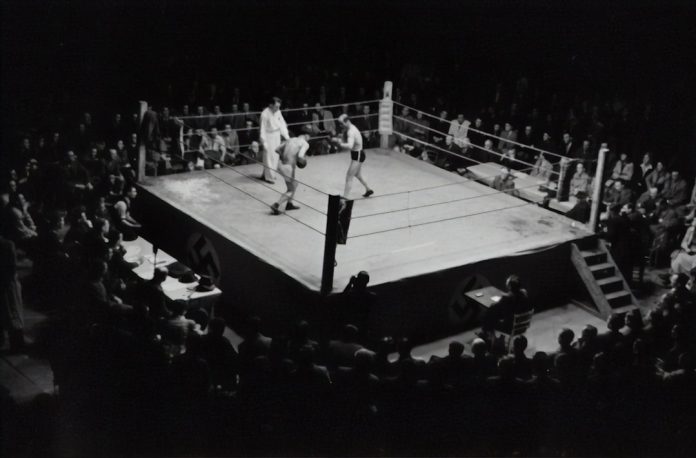Group breaks have become increasingly popular in the world of sports card collecting. But what exactly are group breaks? In simple terms, a group break is when a group of collectors come together to purchase a box or case of trading cards, and then the contents of that box or case are divided among the participants. This allows collectors to have a chance at obtaining cards from a wide range of teams or players without having to buy an entire box or case themselves.
The process of a group break typically involves a host or breaker who organizes and facilitates the break. The host will determine the cost per spot in the break, which is usually based on the price of the box or case being opened. Participants can then purchase one or more spots in the break, with each spot representing a specific team or group of teams.
Once all the spots are filled, the host will open the box or case live on a streaming platform such as YouTube or Twitch. The cards are then distributed to the participants based on the predetermined rules of the break. This can vary depending on the format of the break, which we will discuss later in this article.
Group breaks have been around for several years, but they gained significant popularity with the rise of online streaming platforms. This allowed collectors from all over the world to participate in breaks and watch the action unfold in real-time. The social aspect of group breaks, combined with the thrill of potentially pulling rare and valuable cards, has made them a favorite among collectors.
The Pros of Participating in Group Breaks: Cost-Effective and Accessible
One of the biggest advantages of participating in group breaks is that they offer a cost-effective way to collect cards. Buying an entire box or case of cards can be expensive, especially if you’re looking for specific teams or players. Group breaks allow you to share the cost with other collectors, making it more affordable to participate. You can also choose to purchase spots in breaks that fit your budget, whether it’s a high-end break with premium products or a more budget-friendly break with lower-priced boxes.
Group breaks are also accessible to collectors of all levels. Whether you’re a seasoned collector or just starting out, there are breaks available for every interest and budget. This makes it easier for beginners to get involved in the hobby without having to invest a significant amount of money upfront. It also provides an opportunity for collectors to try out different products and see what they enjoy before committing to purchasing full boxes or cases.
Another advantage of group breaks is the opportunity to obtain rare and valuable cards. When participating in a break, you have a chance at pulling cards from a wide range of teams or players, increasing your chances of getting something valuable. This can be especially exciting if you’re a fan of a particular team or player and have been hoping to add their cards to your collection. Group breaks offer the thrill of the unknown and the possibility of hitting a big card without having to invest in multiple boxes or cases.
The Cons of Participating in Group Breaks: Limited Control and Potential Risks
While there are many benefits to participating in group breaks, there are also some drawbacks to consider. One of the main cons is the limited control over which cards you receive. In most group breaks, the cards are distributed randomly among the participants based on the predetermined rules of the break. This means that you may not end up with the specific cards or teams that you were hoping for.
This can lead to disappointment if you don’t receive the cards you were expecting or if you end up with duplicates of teams or players that you’re not interested in. It’s important to manage your expectations when participating in group breaks and understand that there is an element of luck involved.
Another potential risk of participating in group breaks is the possibility of fraudulent activity. While the majority of breakers and group break hosts are reputable and trustworthy, there have been instances of scams and fraudulent behavior in the past. It’s important to do your research and only participate in breaks hosted by trusted individuals or companies. Look for reviews and feedback from other collectors, and be cautious of any red flags or suspicious activity.
The Rise of Fanatics Sports Cards: What It Means for Group Breaks
In recent news, Fanatics, a leading sports merchandise company, announced its acquisition of trading card licenses previously held by companies like Panini and Topps. This has sent shockwaves through the sports card collecting community and has raised questions about the future of group breaks.
Fanatics’ acquisition of these licenses means that they will have exclusive rights to produce trading cards for major sports leagues such as the NFL, NBA, and MLB. This could potentially have a significant impact on the group break and card collecting industry as a whole.
One potential impact is that the availability of certain products may change. Fanatics may choose to produce cards in different formats or with different designs than what collectors are used to. This could affect the desirability and value of certain cards, which in turn could impact the popularity of group breaks.
Another potential impact is that Fanatics may choose to limit or regulate the distribution of their products. This could mean that group breaks may no longer have access to certain products or that the cost of participating in breaks could increase. It’s still unclear how exactly Fanatics will approach these changes, but it’s something that collectors and breakers will need to keep an eye on.
Speculation is rife about what this means for the future of group breaks. Some believe that Fanatics’ involvement could bring more mainstream attention to the hobby and attract new collectors to participate in breaks. Others are concerned about potential monopolistic practices and the impact on small breakers and collectors. Only time will tell how Fanatics’ entry into the trading card market will ultimately play out.
Sports Cards 101: Understanding the Basics of Card Collecting
Before diving into group breaks, it’s important to have a basic understanding of card collecting. Here are some key concepts to familiarize yourself with:
1. Card Grading: Card grading is the process of evaluating the condition and authenticity of a trading card. Professional grading companies, such as PSA and BGS, assess factors such as centering, corners, edges, and surface condition to assign a grade to the card. Graded cards are highly sought after by collectors and can significantly increase the value of a card.
2. Rookie Cards: Rookie cards are the first cards of a player to be released in a particular set. These cards are often highly valued and sought after by collectors, especially if the player goes on to have a successful career.
3. Autographed Cards: Autographed cards feature the signature of the player or athlete on the card itself. These cards are typically more valuable than non-autographed cards and can add a unique element to a collection.
4. Inserts and Parallel Cards: Inserts are special cards that are inserted into packs at a lower rate than base cards. These can include special designs, subsets, or commemorative cards. Parallel cards are variations of base cards that feature different colors, patterns, or finishes.
When building a collection, it’s important to consider your personal preferences and interests. Some collectors focus on specific teams, players, or sets, while others collect a wide range of cards. Set goals for your collection and research different products and releases to find what aligns with your collecting style.
The Role of Card Trading in Group Breaks: Tips and Tricks for Success

Card trading plays an important role in group breaks and can be a great way to enhance your collection. Here are some tips and tricks for successful trading:
1. Know the Value: Before entering into a trade, it’s important to have a good understanding of the value of the cards involved. Research recent sales and market trends to ensure that you’re making a fair trade. Be aware that the value of cards can fluctuate, so it’s important to stay up to date with the market.
2. Be Open to Offers: Don’t be afraid to explore different trade offers and consider cards or teams that you may not have initially been interested in. Sometimes, unexpected trades can lead to great additions to your collection.
3. Communicate Clearly: When negotiating a trade, be clear and concise in your communication. Clearly state what you’re looking for and what you’re willing to offer in return. This will help avoid any misunderstandings or confusion.
4. Be Respectful: Remember that trading is a two-way street, and both parties should benefit from the trade. Be respectful of the other person’s interests and preferences, and try to find a mutually beneficial solution.
Group Break Etiquette: Do’s and Don’ts for Participants
Participating in group breaks comes with certain etiquette guidelines to ensure a positive experience for everyone involved. Here are some do’s and don’ts for participants:
Do’s:
– Be respectful and courteous to other participants and the breaker.
– Pay promptly for your spots in the break.
– Communicate clearly and promptly with the breaker regarding any questions or concerns.
– Follow the rules and guidelines set by the breaker.
– Provide feedback or reviews after the break to help others make informed decisions.
Don’ts:
– Hog all the spots in a break, leaving little opportunity for others to participate.
– Complain or be overly negative during the break.
– Try to manipulate or cheat the system in any way.
– Engage in disrespectful or inappropriate behavior towards other participants or the breaker.
Maintaining a positive and respectful community is essential for the longevity and enjoyment of group breaks. By following these guidelines, you can contribute to a positive and welcoming environment for all participants.
Popular Group Break Formats: Which One Is Right for You?
There are several different formats of group breaks, each with its own pros and cons. Here are some popular formats to consider:
1. Random Team: In a random team break, participants purchase spots in the break without knowing which team they will receive. Once all the spots are filled, the teams are randomly assigned to the participants. This format offers an element of surprise and can be exciting if you’re open to collecting cards from any team.
2. Pick Your Team: In a pick your team break, participants have the opportunity to choose which team or teams they want to collect in the break. The cost of each team spot may vary depending on the desirability of the team or the product being opened. This format allows you to focus on specific teams or players that you’re interested in.
3. Divisional Break: In a divisional break, participants purchase spots representing specific divisions within a league (e.g., AFC East in the NFL). The cards pulled in the break are then distributed among the participants based on their respective divisions. This format can be appealing if you have a particular interest in certain divisions or rivalries within a league.
When choosing a format, consider your collecting goals, budget, and personal preferences. Each format offers a unique experience, so it’s important to find one that aligns with your interests.
Finding the Best Group Breaks: Where to Look and What to Look For
There are several online platforms and forums where you can find reputable group breaks. Here are some popular options:
1. Breakers.tv: Breakers.tv is a popular streaming platform where many breakers host their breaks. You can browse through different breakers and find breaks that fit your interests and budget.
2. Blowout Cards Forums: The Blowout Cards Forums is a community-driven platform where collectors can buy, sell, and trade cards. They also have a dedicated section for group breaks, where you can find reputable breakers and participate in breaks.
3. Facebook Groups: There are many Facebook groups dedicated to sports card collecting and group breaks. These groups often have active communities and provide a platform for collectors to connect and participate in breaks.
When looking for reputable group breaks, it’s important to do your due diligence. Look for breakers with positive reviews and feedback from other collectors. Check if they have a website or social media presence where you can learn more about their reputation and track record. Be cautious of any red flags or suspicious activity, and trust your instincts when choosing which breaks to participate in.
Navigating the World of Group Breaks for Maximum Fun and Profit
Group breaks offer an exciting and cost-effective way to collect sports cards. They provide an opportunity to obtain rare and valuable cards while connecting with other collectors from around the world. However, it’s important to approach group breaks responsibly and be aware of the potential risks involved.
By understanding the basics of card collecting, familiarizing yourself with different group break formats, and following proper etiquette, you can navigate the world of group breaks for maximum fun and profit. Stay informed about industry developments, such as the recent acquisition of trading card licenses by Fanatics, and adapt your strategies accordingly.
Remember that group breaks should be enjoyed as a hobby and not solely as a means of making money. The thrill of opening packs, trading cards, and connecting with fellow collectors is what makes this hobby so special. So participate responsibly, have fun, and happy collecting!
If you’re interested in the emotional rollercoaster of unearthing valuable sports cards, you won’t want to miss this article on Breakaway Cards. It delves into the heart-pounding moments collectors experience when they stumble upon a rare and valuable card. From the adrenaline rush of finding a hidden gem to the anticipation of its potential worth, this article captures the thrill of the hunt. Check it out here: Heart-Pounding Moments: The Emotional Rollercoaster of Unearthing a Valuable Sports Card.
FAQs
What are group breaks?
Group breaks are a type of online card collecting where a group of people pool their money together to purchase a box or case of trading cards. The cards are then opened live on a streaming platform, and the cards are distributed to the participants based on a predetermined set of rules.
What are the pros of participating in group breaks?
Participating in group breaks can be a fun and social way to collect trading cards. It can also be a more affordable way to collect rare or expensive cards, as the cost is split among the group. Additionally, group breaks can offer the chance to pull rare or valuable cards that may not be available through individual purchases.
What are the cons of participating in group breaks?
One potential downside of group breaks is that participants have no control over which cards they receive. Additionally, there is no guarantee that the cards received will be of equal value to the amount paid to participate in the break. There is also the risk of not receiving any cards at all, as the distribution is based on chance.
How do I participate in a group break?
To participate in a group break, you will need to find a group or community that organizes them. You will then need to pay your share of the cost of the box or case of cards. Once the break is live, you will be able to watch the cards being opened and distributed on a streaming platform.
Are group breaks legal?
Yes, group breaks are legal as long as they do not violate any laws or regulations related to gambling or online commerce. It is important to research the group or community organizing the break to ensure that they are reputable and operating within the law.



